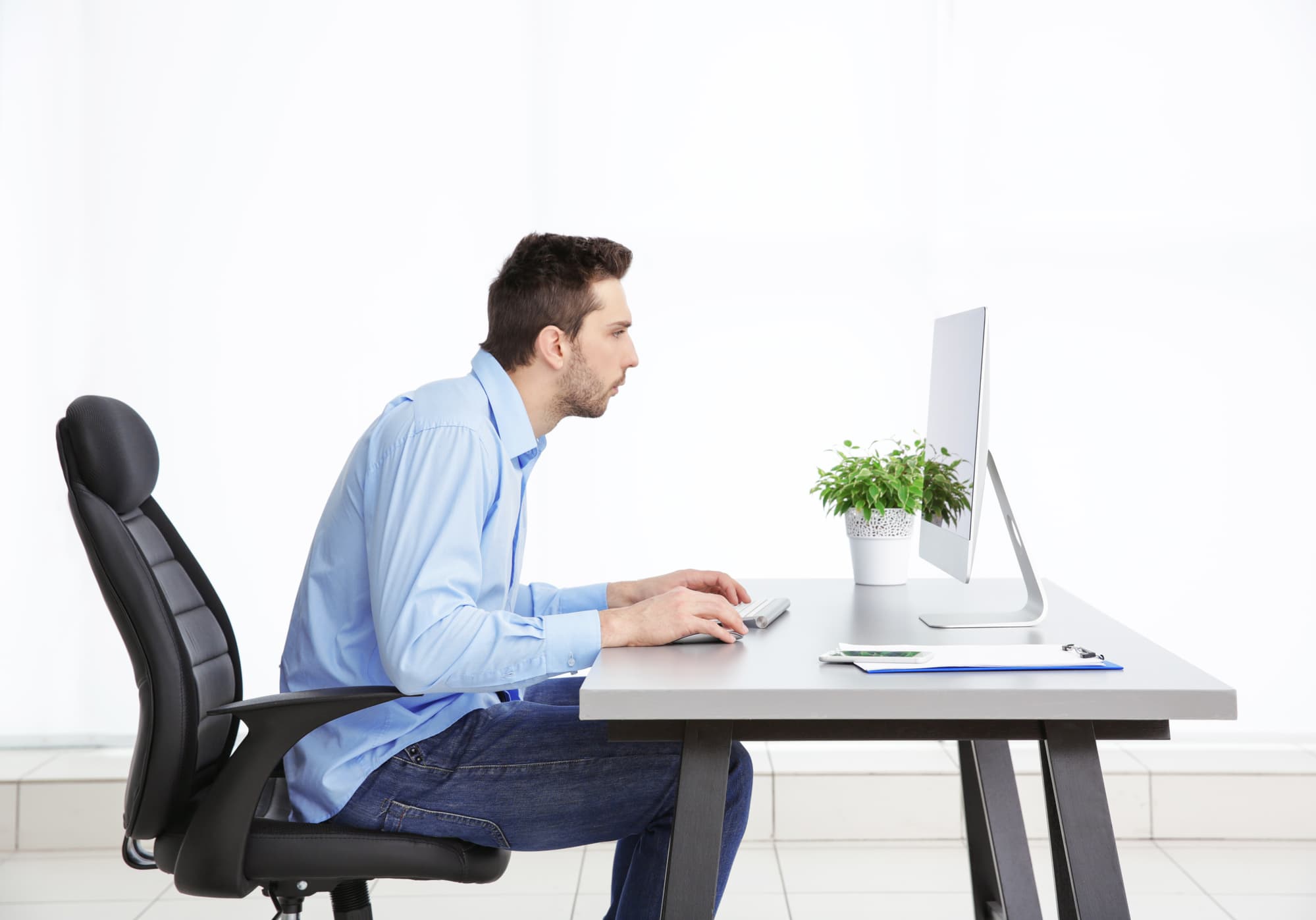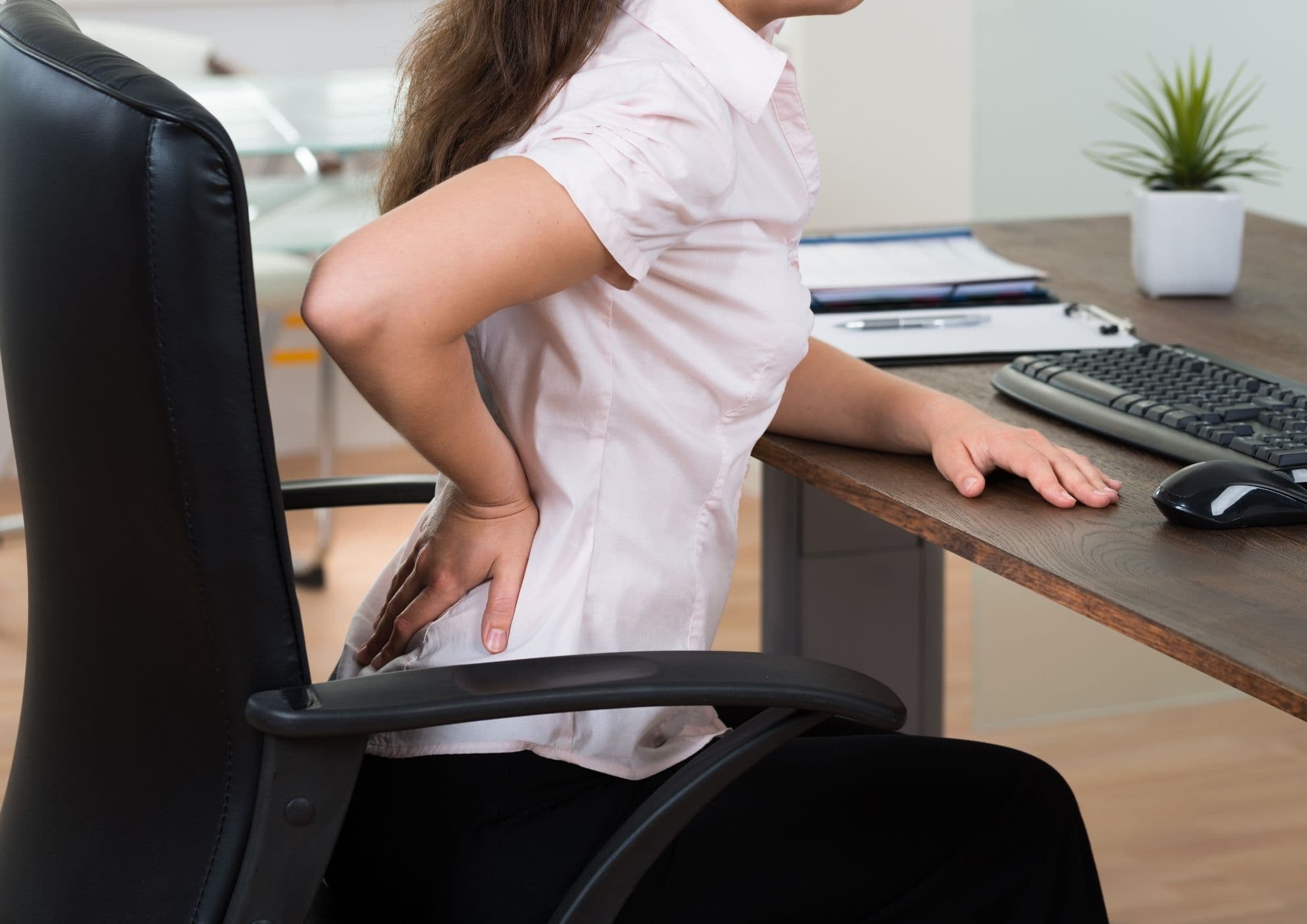Sitting for hours is bad for your health. And it’s a good thing standing desks are here to the rescue.
These innovative pieces of office furniture have several benefits for sure. But can a standing desk help back pain?
Yes, it can. But desk use know-how and work habits are also part of the solution.
Read on to learn more about how standing desks work and what makes them effective in preventing back pain.
It’s How You Use It
How can a standing desk help back pain and other related conditions? Well, standing desks encourage good posture.
Standing at work also reduces the pressure on the neck and lower back. And so, in a way, these desks help ease back pain.
However, while these may provide some form of relief, they are not the only answer to the problem.
You also have to know how to use the standing desk correctly. Moreover, it is hard to gain its optimum benefits without sitting and standing from time to time.
To understand further, let us identify the causes of back pain at work and see how a standing desk can help.

Common Causes Of Back Pain At The Office
Employees constantly doing desk-based jobs often experience various musculoskeletal disorders (MSDs) like back pain. All that long sitting hours lead to stiffness and pressure build-up on the body.
A global review, in particular, concluded that low back pain in adults has a point prevalence of 12%. One-year and lifetime prevalences were at 38% and 40%, respectively.
Back pain comes in two types: acute and chronic back pain. Acute back pain is short term and only lasts for a few days or weeks, while chronic pain lasts longer (from 12 weeks or more).
The condition differs in intensity since back pain ranges from a sharp, abrupt pain to a dull yet persistent ache.
Here are some causes of work-related back pain.
1. Prolonged Sitting
Sitting improperly for extended periods is not only uncomfortable but also painful. Poor sitting habits strain the neck, arms, back and legs.
In turn, pressure builds up on the spinal discs and back muscles. Slouching while sitting down also lead to overstretching of the spinal discs and ligaments.
2. Workspace Set-Up
Poor workspace arrangement contributes to bad posture and, eventually, back pain at work. Body aches are more likely when employees constantly reach, twist or bend to accomplish different tasks.
Workers using chairs without lumbar supports also lead to poor posture and MSDs.
3. Lack of Activity
Desk jobs that do not require many tasks can be a factor in MSD development. The risks are higher for workers with poor posture and chairs with insufficient back support.
If you live a sedentary lifestyle outside of work, the lack of exercise or any strenuous physical activity can result in back pain, too.
4. Psychological Stress
Work can be pretty stressful, triggering back pain and other health conditions. And each time we feel stressed out or anxious, physical and chemical reactions happen within the body.
Specifically, adrenaline and cortisol release causes our muscles to tighten. This tightening happens on the shoulders, the neck and the spine. Prolonged tension then leads to backaches or lower back pain.

Take Advantage of Standing Desks
A standing desk makes it easier for workers to vary their movements throughout the day and avoid MSDs like back pain.
Furthermore, it also increases alertness, encourages better posture and helps stretch stiff muscles.
Helping your body adapt at work and managing those pains, in turn, can boost work productivity.
Working with this desk takes some figuring out, though. But give it some time to let your body adjust.
These tips on correct standing desk use will help you take full advantage of this innovative furniture.
1. Work Yourself Into the Standing Desk Bit by Bit
Yes, it takes some time before you get used to a standing desk. So, if you are a first-time user, keep using it until you feel less uncomfortable.
Begin by standing for half an hour each day, then gradually increase the time.
You can set an alert to remind you when to stand or sit down throughout your workday. Test a variety of time intervals and see which one fits you best.
2. Stand, Sit, Walk, Move
Standing for hours is as harmful as prolonged sitting. It can affect your tendons, leg muscles and connective tissues.
You may develop varicose veins, too. Hence, you have to change your position from time to time.
You can stand, walk, then sit back down again. Refill your cup of coffee, get some snacks, or take phone calls standing up.
You can also do simple exercises like squats or lunges at your work desk.
3. Adjust the Desk to the Correct Height
Neutral body positions happen we slouch or arch our bodies while sitting or standing. However, these harm the muscles and bones, causing discomfort and pain.
You can avoid these problems by setting the desk height correctly to keep your spine, head and neck aligned.
The head must be partially bent, the spine in an S-shaped curve, and the hips straight. Your wrists should lie flat on the desk, while the elbows must be at a 90-degree angle.
Make sure to adjust the computer screen so you won’t have to bend your head down while looking at it.

4. Arrange Your Keyboard and Mouse Properly
Put your keyboard and mouse in optimal locations to avoid wrist pain when using the standing desk. Make sure that those devices are at similar levels.
Whenever you type, always keep your wrists straight, too. Gel mouse pads or adjustable keyboard stands can also help in case you still experience sore wrists from time to time.
5. Use Helpful Add-Ons
Consider investing in accessories like arm supports and anti-fatigue mats to optimise your standing desk set-up.
The arm support is a soft cushion that you can fasten on the desk. This item minimises tension on the wrists when using the computer.
Arm supports are capable of drastically lessening shoulder and neck issues, too.
Meanwhile, anti-fatigue mats are typically for employees who stand while working, like store counters or assembly lines.
These items counter fatigue caused by prolonged standing. The mats facilitate moderate movements of the muscles in the legs for better blood circulation and reduced discomfort.
If you experience leg or lower back pain from standing during initial use of the desk, the anti-fatigue mat is the perfect quick fix.
Conclusion
Can a standing desk help back pain? While it is not a cure-all, it can provide significant relief once you get used to it.
Without back pain, you’ll feel happier at work and become more productive. This domino effect probably explains why many employees have invested in one.
So, if you’re keen to try this office furniture out, make sure you know how to use it. Also, pair it with helpful add-ons that can alleviate back pain and improve your overall standing desk experience.
Informative Q&A
1. How to choose the best standing desk?
The best standing desk comes with an adjustable height to accommodate both sitting and standing positions. Choose one with a desk depth of at least 30 inches.
As for width, it will depend on the size of your workspace. When it comes to mechanisms, pneumatic and electric ones are considered the best. You can also learn more from our sit-stand desk buying guide.
2. How high should a standing desk be?
A standing desk must accommodate both sitting and standing heights. According to ergonomic furniture experts, a user-friendly standing desk has an optimal height range of 22.6 to 48.7 inches.
This desk height range should cover most users’ varying requirements.
- 6 Benefits of Using Seat Cushion - February 20, 2024
- 4 Tips to Fix Uncomfortable Chair - February 19, 2024
- How to Position Lumbar Support on Ergonomic Chair - February 15, 2024

